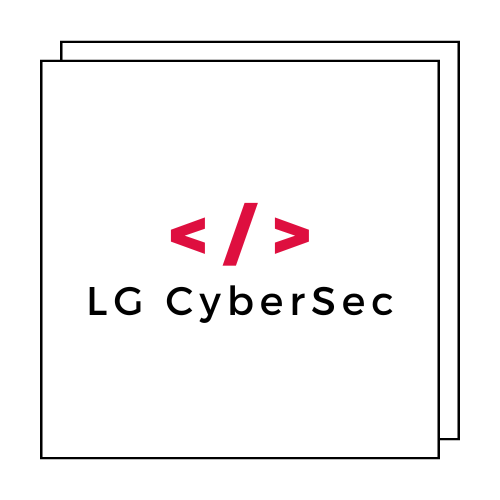The cybersecurity landscape in the Middle East has been shaken by the emergence of a sophisticated new ransomware strain known as Charon, which has successfully infiltrated multiple organizations across the region. This advanced malware represents a significant escalation in the ongoing cyber warfare targeting critical infrastructure and business operations throughout the Middle East. Security researchers have identified Charon ransomware as a particularly dangerous threat due to its advanced evasion techniques, robust encryption capabilities, and targeted approach to high-value victims.
Understanding the Charon Ransomware Attack Vector
Charon ransomware employs a multi-stage attack methodology that begins with initial reconnaissance and culminates in full system encryption. The malware operators demonstrate a deep understanding of Middle Eastern business practices and technological infrastructure, allowing them to craft highly targeted phishing campaigns and exploit region-specific vulnerabilities.
The initial infection vector typically involves spear-phishing emails containing malicious attachments or links that appear legitimate to Middle Eastern organizations. These emails often reference local business practices, cultural events, or regulatory compliance requirements specific to the region, making them particularly effective at bypassing both human skepticism and automated security filters.
Technical Analysis of Charon’s Payload Delivery
Once executed, Charon ransomware establishes persistence through multiple mechanisms, including registry modifications, scheduled tasks, and service installations. The malware employs advanced anti-analysis techniques, including dynamic API resolution, string obfuscation, and virtual machine detection to evade security solutions commonly deployed in Middle Eastern enterprise environments.
The encryption process utilizes a hybrid cryptographic approach, combining AES-256 symmetric encryption for file content with RSA-2048 asymmetric encryption for key protection. This methodology ensures that without access to the attackers’ private decryption key, recovering encrypted files becomes computationally infeasible, even for organizations with substantial technical resources.
Impact on Middle Eastern Organizations
The Charon ransomware campaign has demonstrated particular effectiveness against Middle Eastern targets due to several regional factors. The rapid digitization of government services, financial institutions, and energy sectors across the Gulf Cooperation Council (GCC) countries has created an expanded attack surface that cybercriminals are increasingly exploiting.
Organizations in the region often maintain hybrid IT environments that combine legacy systems with modern cloud infrastructure, creating potential security gaps that sophisticated ransomware like Charon can exploit. The malware has shown capability to move laterally across mixed environments, encrypting both on-premises servers and cloud-connected resources.
Sector-Specific Targeting Patterns
Analysis of Charon ransomware attacks reveals a preference for targeting critical infrastructure sectors, including energy, telecommunications, and financial services. These sectors represent high-value targets due to their essential role in regional economies and their typically higher capacity to pay substantial ransom demands.
The healthcare sector across the Middle East has also experienced significant impact from Charon ransomware attacks, with several hospitals and medical facilities reporting operational disruptions. The targeting of healthcare infrastructure during ongoing regional health challenges demonstrates the malware operators’ willingness to attack critical services regardless of potential humanitarian impact.
Advanced Evasion and Persistence Mechanisms
Charon ransomware incorporates several sophisticated evasion techniques specifically designed to bypass security solutions commonly deployed in Middle Eastern enterprise environments. The malware employs process hollowing, DLL side-loading, and living-off-the-land techniques to maintain a low profile during the attack lifecycle.
The ransomware demonstrates awareness of regional security practices by specifically targeting and disabling backup solutions commonly used by Middle Eastern organizations. This includes attacking popular backup software platforms and attempting to delete shadow copies and system restore points before beginning the encryption process.
Network Propagation and Lateral Movement
Once established within a network, Charon ransomware employs multiple propagation mechanisms to maximize damage across the target organization. The malware scans for network shares, maps domain trusts, and attempts to exploit common vulnerabilities in Windows Active Directory environments prevalent across Middle Eastern corporate networks.
The ransomware also demonstrates capability to exploit common misconfigurations in enterprise networks, including weak service account passwords, excessive administrative privileges, and unpatched vulnerabilities in network infrastructure devices. These attack vectors are particularly effective in rapidly growing Middle Eastern organizations that may prioritize business expansion over comprehensive security hardening.
Attribution and Threat Actor Analysis
Cybersecurity researchers have identified several indicators suggesting that Charon ransomware may be operated by an organized cybercriminal group with previous experience targeting Middle Eastern organizations. The sophistication of the attack methodology, combined with detailed knowledge of regional business practices, indicates professional-level threat actors rather than opportunistic cybercriminals.
The ransom notes associated with Charon attacks demonstrate cultural awareness and occasionally include Arabic text, suggesting the operators have invested in understanding their target demographic. This localization effort represents a concerning trend toward more targeted and culturally aware ransomware campaigns in the region.
Connection to Previous Regional Cyber Campaigns
Analysis of the Charon ransomware’s technical indicators reveals potential connections to previous cyber campaigns that have targeted Middle Eastern organizations. These connections include shared command-and-control infrastructure, similar coding patterns, and overlapping targeting methodologies that suggest coordination among regional threat actors.
The timing of Charon ransomware attacks also demonstrates strategic planning, with many incidents occurring during regional holidays or significant business periods when IT security teams may have reduced staffing levels. This tactical approach indicates sophisticated operational security awareness among the threat actors.
Defensive Strategies and Mitigation Approaches
Organizations across the Middle East must implement comprehensive defensive strategies to protect against Charon ransomware and similar advanced threats. This includes deploying endpoint detection and response (EDR) solutions capable of identifying behavioral indicators of ransomware activity, even when the malware successfully evades signature-based detection.
Network segmentation represents a critical defensive measure that can limit the spread of Charon ransomware once initial compromise occurs. Organizations should implement zero-trust network architectures that require authentication and authorization for all network communications, reducing the malware’s ability to move laterally across enterprise environments.
Backup and Recovery Planning
Given Charon ransomware’s demonstrated ability to target backup solutions, organizations must implement robust backup strategies that include offline and immutable backup copies. The 3-2-1 backup rule becomes particularly relevant when facing advanced ransomware threats that actively seek to destroy recovery capabilities.
Organizations should regularly test backup restoration procedures and maintain detailed incident response plans that account for complete system compromise scenarios. These plans should include communication strategies, business continuity measures, and decision-making frameworks for evaluating ransom payment demands.
Regional Cybersecurity Implications
The emergence of Charon ransomware targeting Middle Eastern organizations reflects broader regional cybersecurity challenges that require coordinated responses. Government agencies, private sector organizations, and international partners must collaborate to share threat intelligence and develop effective countermeasures against advanced persistent threats.
The Cybersecurity and Infrastructure Security Agency (CISA) provides valuable resources for organizations dealing with ransomware threats, including technical guidance and incident reporting mechanisms that can help track regional attack patterns.
Regional cybersecurity frameworks must evolve to address the sophisticated threat landscape represented by campaigns like Charon ransomware. This includes developing specialized threat hunting capabilities, enhancing information sharing mechanisms, and establishing robust incident response partnerships across the Middle East.
International Cooperation and Threat Intelligence Sharing
The transnational nature of modern ransomware operations requires international cooperation to effectively combat threats like Charon. Middle Eastern organizations should participate in global threat intelligence sharing initiatives and collaborate with international law enforcement agencies to track and disrupt ransomware operations.
Organizations can benefit from participating in industry-specific information sharing and analysis centers (ISACs) that provide real-time threat intelligence and best practices for defending against advanced ransomware campaigns.
Conclusion
The emergence of the Charon ransomware marks a significant and concerning evolution in cyber threats. Unlike most ransomware strains, Charon employs Advanced Persistent Threat (APT)-level tactics—including DLL sideloading, process injection, anti-EDR measures, and the deletion of backups and shadow copies—to evade defenses and hasten encryption, posing a heightened risk to targeted organizations . Its campaigns against the Middle East’s public sector and aviation industry, along with customized ransom notes naming victim organizations, underscore Charon’s highly tailored, targeted nature .
While certain technical overlaps with the Earth Baxia (APT41) advanced espionage group suggest possible links, analysts caution that attribution remains uncertain; the overlap may reflect imitation or independent development of similar tradecraft .
Ultimately, Charon exemplifies a troubling convergence: sophisticated APT tactics harnessed for immediate ransomware impact. This signals a new era where organizations must guard not only against opportunistic cybercrime but also well-crafted, stealthy campaigns—and underscores the urgent need for advanced threat detection, rigorous backups, and robust incident response readiness.

